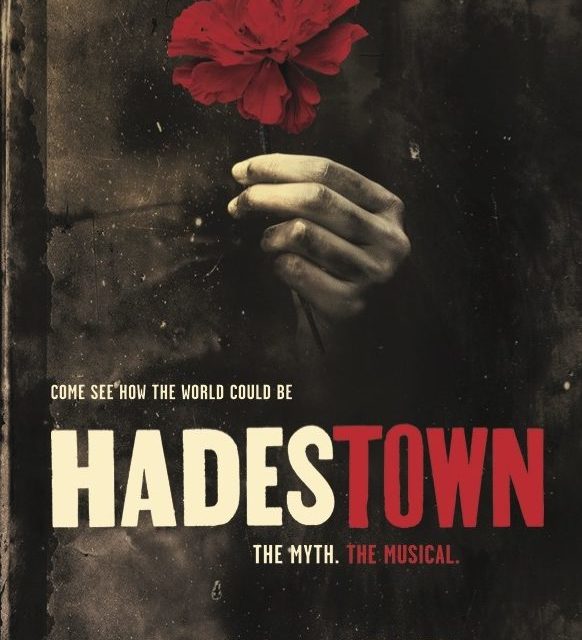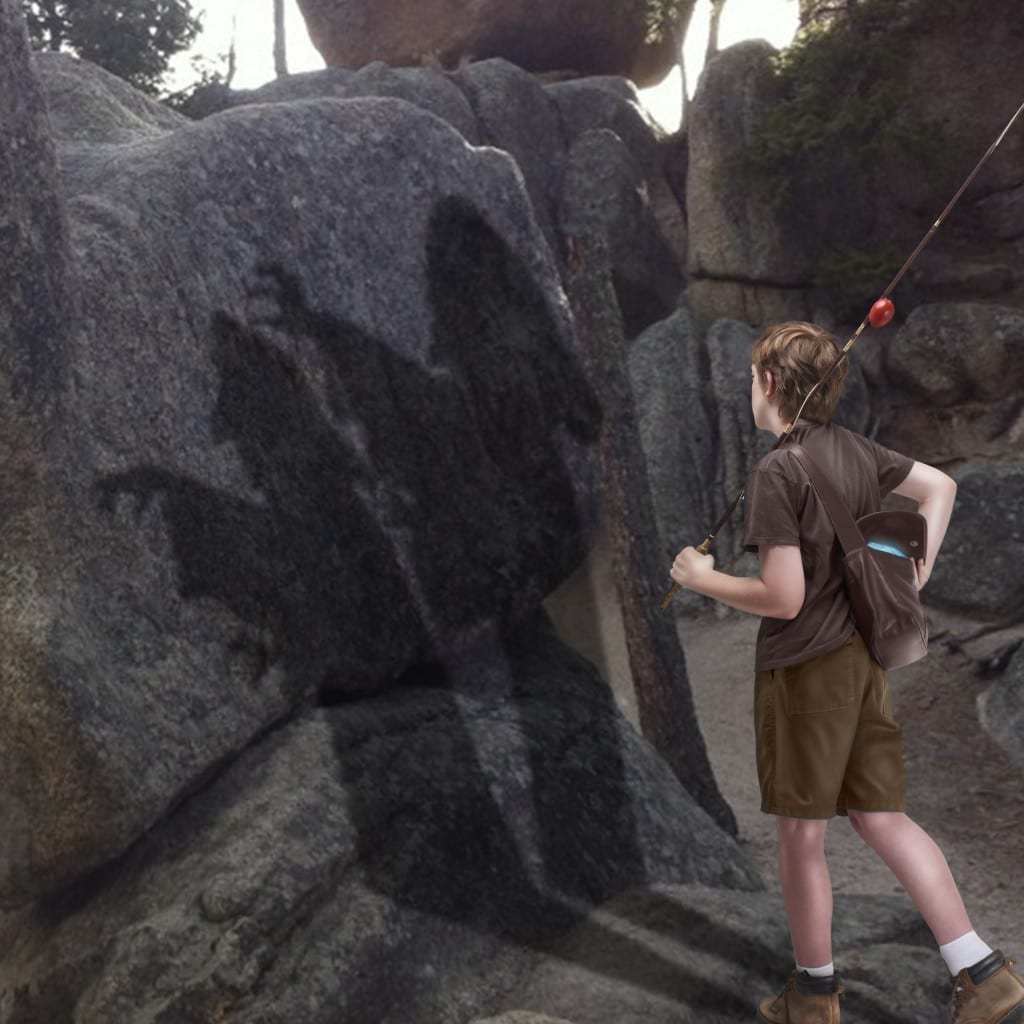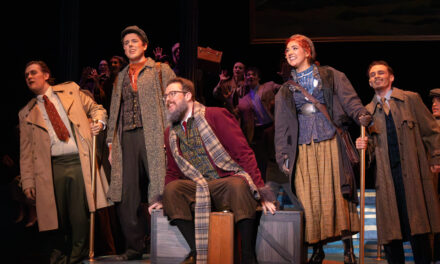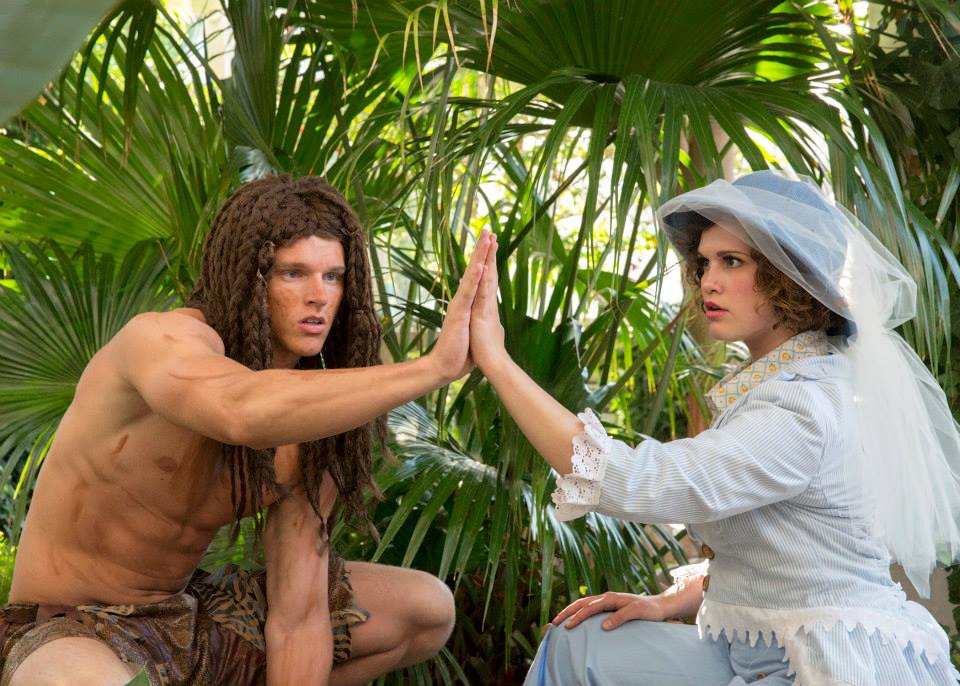BOISE — How far would you go for love, and how long are you willing to wait for it to come back? These are the major dramatic questions of the Tony Award winner for Best Musical and Broadway sensation, Hadestown, with music, lyrics and book by Anais Mitchell. I answered these queries in my own way by waiting ages for the chance to drive over 700 miles (round trip) to see the national tour of Hadestown at the palatial Velma V. Morrison Center on the Boise State University campus. Hadestown puts a modern, soulful sound on the mythological and ancient Greek romances between Orpheus and Eurydice as well as Hades and Persephone. It is an old song, and the story is a tragedy, but the show was sensational in nearly every way.
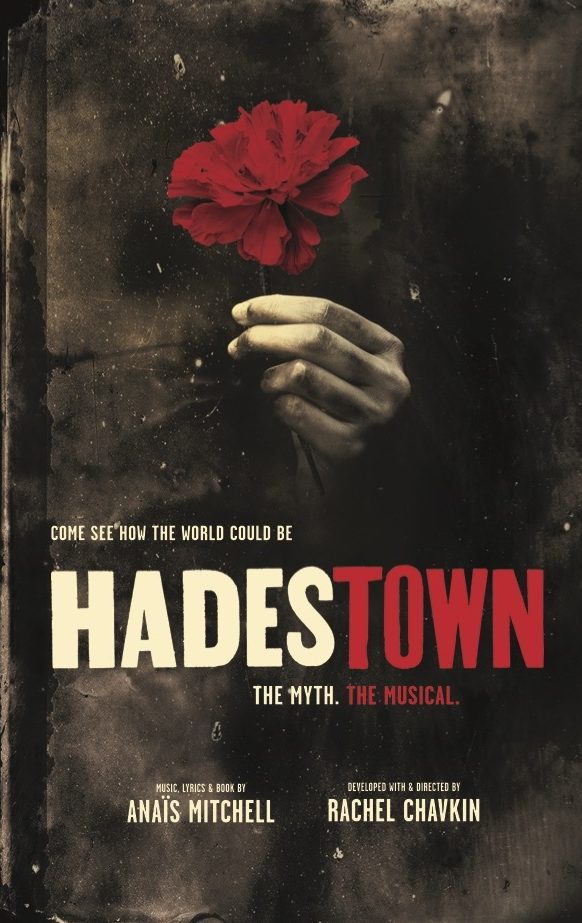
Show plays in Boise through December 3, 2023.
The nearly 2,000-seat performance space was nearly filled to capacity (with the lowered pit holding extra audience seats), and at times the musical had the atmosphere of a pop concert. The stage featured a raised platform that a circular treadmill center stage and another treadmill perpendicular to the audience. Both were surrounded by leveled platforms on which live performers played and the ensemble interacted. The upstage wall featured a beautiful raised balcony where Hades usually appeared over a garage-style door that split wide in the middle like a mouth to the underworld that would consume any who passed its portals. Bradley King‘s set design was functional and dynamic, but allowed for the audience to imagine the Hadestown hellscape in the show’s second act.
The lights also featured majestically in the show. King’s lighting design featured fog and lighting effects that allowed for the play’s climactic walk out of the underworld by Orpheus and Eurydice to feel dark and daunting. The fates, who walk along whispering doubt to Orpheus, carried lanterns that allowed them to seemingly appear and reappear around him. When Hades seeks to intimidate Orpehus into leaving, he crescendos into singing about his “electric city.” That swell was matched by blaring flood lights that illuminated intensified for an instant and went dark again. It was one of many such stunning visuals of light and design that captivated me. My only nit to pick with the technical aspects were that it seemed to take some time in the first number for the sound to mix properly, as music sometimes overwhelmed actors, but that was a concern that was not long lived. It was otherwise impressively designed, called and executed at the highest possible level.
My previous exposure to Hadestown had come from the original Broadway cast recording featuring Reeve Carney (as Orpheus), Eva Noblezada (as Eurydice), Patrick Page (as Hades), Amber Gray (as Persephone), and Andre de Shields (as Hermes). While it is unfair to compare most performances to their Broadway counterparts, a national tour carries with it expectations and hopes for me to see something like what I would see on Broadway. In nearly every case, the performances I witnessed live were powerful beyond my wildest dreams.
From the moment that Will Mann stepped on stage as the narrator god Hermes, he began to engage the audience. Silently, but with laser focus, he paused, did a small heel turn, and after a beat charismatically fluttered his suit coat to reveal the ostentatious vest beneath. Audience members laughed, whooped, and were immediately hooked by his powerful stage presence. In the opening number where each character is introduced, it felt like the live band added measures to allow for the raucous audience responses. Through the play, Mann brought a playful flair to Hermes that no snippet from the Tonys, Instagram or Spotify could have prepared me for. He told the story with gusto and no moment felt trivial or stale.
Matthew Patrick Quinn towered over his stage-fellows with slicked back hair, a sparkling black pinstriped suit, and shades that he manipulated to great effect. Quinn’s portrayal of Hades was cool as hell. The iconic vocals of Patrick Page were, of course, different from Quinn’s delivery, but Quinn’s presence filled the stage constantly. I mentioned his power in moments such as the blaring “Electric City” moment, but his tenderness during Epic III was equally important to the portrayal. When Orpheus begins to sing about the “King of Shadows,” Quinn turned to the audience and in a cutesy voice intoned, “Aww, he’s talking about me!” It was a varied delivery, but it worked. The quick response he had to the iconic “la-la-las” of the show was nimble and focused, and I could see a dynamic shift in the Hades character through Quinn’s clear physicality and shifted demeanor as the epic went on. The performance was riddled with moments like these.
The leading ladies were also deeply impressive. Lana Gordon’s Persephone was part diva lush and part spurned lover. In a moment that will ever be burned into my brain, Gordon belts a high note during Act 2’s opening number, “Our Lady of the Underground,” and as she crescendos louder and higher, she began to bend backwards at nearly a ninety degree angle. Her smile afterwards revealed that she knew what a flex that was, and her scenes all felt that easy and free while maintaining great presence on a stage of dominating personalities.
As Eurydice, Amaya Braganza is a virtuoso of physical acting choices. During her ballad “Flowers,” Braganza is on her knees nearly the entire number — but she manages moments of stillness, expressive and desperate yearning through dance and reaching with arms. Each move felt as intentional as the symbols she used (such as the flower and coin) in “When the Chips are Down.” Her performance ranged from skittish, to sweet and glorious, to gut wrenching. Braganza alone was worth the cost of admission, and she seemed to single handedly carry many scenes.
The downside to this was that her counterpart in Orpheus, J. Antonio Rodriguez, had a rough first act. Rodriguez quickly demonstrated the quirky awkwardness of Orpheus from his first glances towards Eurydice. But in the first act, he did not seem to move on from that first choice. His performance was almost wooden at times, and the character’s competing desires for Eurydice and to make music lacked depth. It was almost as if Rodriguez was not able to measure up to the character. The iconic “Wait for Me” song was strongest with the Chorus and Hermes, and I finished act 1 feeling like his performance was going to be a letdown. Fortunately, something switched at intermission. The once-uncertain Orpheus was gone and into Hadestown stepped Rodriguez as a man on a mission. For the rest of the play, he was a commanding presence whose incredible performance skills were on full display. I thought he brought incredible energy to the walk out of hell as “Doubt Comes In” leads to the plays tragic conclusion. His voice became much stronger and the times that Rodriguez acted out Orpheus’s uncertainty felt like strong acting and not the lack of a clear objective.
The chorus and fates were profoundly strong, and the directing from Rachel Chavkin was ingenious at finding ways to keep these elements fresh and interesting. I loved watching the fates move behind or alongside characters to be a physical representation of their inner thought and feelings. Much like the voicing shadows from my review of Eurydice earlier this year, the choice to have these choruses serve as physical thought bubbles added richness and texture to the characters that only a live performance can bring. The space was well used, and the ensemble had such beautiful on stage chemistry from start to finish.
I am not breaking world news that Hadestown is an incredible show. If not for the COVID-19 pandemic interrupting the early part of its Broadway run, Hadestown would probably be a household name alongside Wicked or Les Misérables. But the tour in this majestic venue was a sight to behold. In a life of theatre making and consuming, this performance was one for the ages. Hadestown was beautifully staged and expertly performed to give me an emotional journey filled me with dysphoria and optimism. There is not a chance in Hadestown that I would pass up another chance to see this marvelous play.

